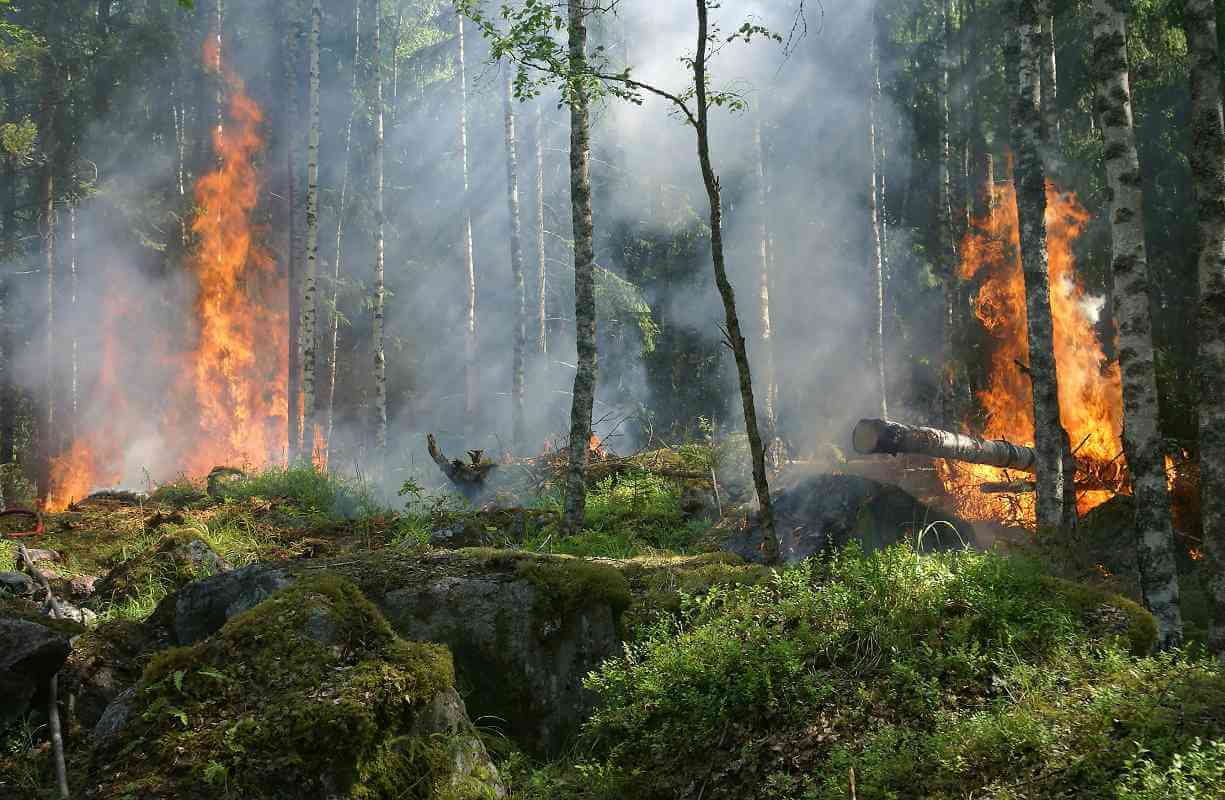How do wildfires spread so fast??
Well, wind is one of the primary factors influencing wildfire spread, carrying embers long distances and igniting new fires ahead of the main blaze. This means it can burn very quickly in the foothills, as well as higher elevations, due to higher winds. Embers can travel up to several miles from the main fire, igniting new fires when they land on flammable materials like dry grass, leaves, or rooftops. Fires tend to spread faster uphill due to the preheating of vegetation by rising heat, making steep slopes particularly vulnerable.
The amount, type, and arrangement of vegetation in an area greatly affect how quickly a fire spreads. Dense, dry vegetation fuels faster-moving fires. Extended periods of drought dry out vegetation, making it more flammable and increasing the likelihood of rapid wildfire spread. Wildfires generate intense heat that rises in columns (convection), preheating nearby vegetation and making it easier for the fire to spread, and there are certain types of vegetation that contain oils or resins that burn intensely, contributing to wildfires growing quickly out of control. In dense forests, wildfires can spread through the canopy (crown fires), moving from treetop to treetop and accelerating the fire's spread.
In areas where human development meets wildland vegetation (urban-wildland interface), fires can spread quickly from forests into communities. High temperatures, low humidity, and strong winds create ideal conditions for wildfires to spread rapidly, often making them more difficult to control. Wildfires can create spot fires when embers are carried by the wind to a new location, igniting separate fires that may merge with the main blaze. Human impact, such as discarded cigarettes, unattended campfires, or equipment sparks, are common ignition sources that can lead to the rapid spread of wildfires. Then we've got firebrands, which are small flaming or glowing pieces of debris that are carried by the wind, potentially igniting new fires miles from the original blaze. In extreme cases, wildfires can create their own weather systems, known as firestorms, with strong winds and erratic fire behavior that accelerates spread.
How to Prepare:
Sign up for local emergency alerts and stay informed about wildfire risks in your area through official channels and weather reports.
Assemble an emergency kit with essentials like water, non-perishable food, medications, important documents, and a battery-powered radio and flashlight.
Clear a 30-foot zone around your home, removing dead vegetation, leaves, and flammable materials, to help reduce the risk of wildfire spreading.
When constructing or renovating, choose fire-resistant materials for roofing, siding, and decking to reduce your home’s vulnerability.
Have a plan that includes multiple evacuation routes, a communication strategy, and a designated meeting place outside the danger zone. Don't forget, it's essential to make sure your entire household is aware and prepared for action!
Regularly clear leaves, pine needles, and other debris from your gutters and roof to prevent them from catching fire.
If you live in a wildfire-prone area, maintain firebreaks by mowing grass and trimming shrubs along property lines and access roads.
Familiarize yourself with all possible evacuation routes, as fires can block roads quickly and without much warning. Don't forget to check the evacuation routes provided by authorities, as roads may be blocked or unsafe.
Ensure your vehicles are fueled and ready to go at a moment’s notice during wildfire season in case you need to evacuate quickly.
Monitor Air Quality: Wildfire smoke can be hazardous. Monitor air quality levels and stay indoors with windows closed during poor air quality days.
What to do in case of evacuation:
If authorities issue an evacuation order, leave your home immediately. Delaying can put you and your family at greater risk.
Don't forget your (prepared) emergency kit, including essential items like water, food, medications, important documents, and a first-aid kit.
Dress in long sleeves, long pants, sturdy shoes, and wear a face mask to protect yourself from heat, flames, and smoke.
If time permits, turning off gas, electricity, and water can help minimize the risk of damage to your home.
Close all windows, doors, and vents, and leave lights on so firefighters can see your home through smoke if necessary.
Keep your phone tuned to emergency channels for updates on the fire's progress and additional evacuation instructions.
Check on neighbors, especially the elderly or those with disabilities/mobility issues, and offer assistance if they need help evacuating.
Let a friend or family member outside the evacuation area know where you are going and your expected arrival time.
If you have any questions or would like to check your coverages, please reach out to Anastasia at [email protected], or call us at the office at 720.335.6872.
